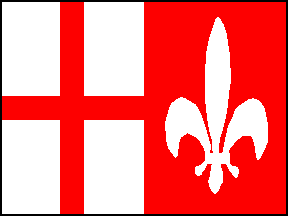|
Italia
Line (Societa di Navigazione Italia S.p.A. ) (Est. 1932) |
||||||||||||||||||||
|
|
||||||||||||||||||||
| RETURN TO THE LOBBY
THE OCEAN LINER VIRTUAL MUSEUM |
||||||||||||||||||||
|
The SocietÓ di Navigazione Italia S.p.A. was started in 1932 a Italia Flotte Riunite (United Fleets Italy), when the Italian government encouraged the merger of Genoa-based Navigazione Generale Italiana S.p.A. (NGI), Turin-based Lloyd Sabaudo, and Trieste-based Cosulich STN, which was previously an Austro-Hungarian company. The new company acquired the Cosulich-owned M.S. Saturnia and M.S. Vulcania, the Lloyd Sabaudo-owned S.S. Conte Rosso, S.S. Conte Biancamano and S.S. Conte Grande and the NGI-owned S.S. Giulio Cesare, S.S. Duilio, S.S. Roma and M.S. Augustus. The same year two previously commissioned ocean liners were delivered to the company: S.S. Rex (ordered by NGI), which went on to capture the coveted Blue Riband in 1933, and the S.S. Conte di Savoia (ordered by Lloyd Sabaudo).By 1937 this Italia Flotte Riunite concern had made rapid recovery and repaid the Government bonds which had supported it. It was then changed into a Limited Company under the name Italia Societa Anonima di Navigazione. Lloyd Triestino was incorporated into the new company. A new holding company (FINMARE) was formed and created four self contained shipping companies:
During the Second World War, the company lost many of its ships, including the Rex and the Conte di Savoia. Other vessels were captured by the United States and converted into troopships; four of them survived the war: SS Conte Biancamano, SS Conte Grande, SS Saturnia and SS Vulcania. The company only resumed their services in 1947, under the company's new name Societa di Navigazione Italia. In addition to the four vessels returned by United States, two new vessels, SS Andrea Doria and SS Cristoforo Colombo were commissioned in 1953 and 1954, respectively, to show the world that the country had recovered from the war and to re-establish the nation's pride. However the Andrea Doria was sunk only three years after she was commissioned, in 1956, after a collision with the MS Stockholm. The company was swift to order a replacement for its sunken flagship, and the new SS Leonardo da Vinci was delivered in 1960. The ship was based on the same design as Andrea Doria, but enlarged and featured many technical innovations. In the late 1950's the arrival of the jet airliner had not yet had a notable effect on passenger numbers in the transatlantic service from the USA to the Mediterranean traffic and the Italian Line decided to order another pair of new ships for the trade. Plans for these were already being made in 1958, but the construction took longer than expected and the ships weren't completeted until 1965, as SS Michelangelo and SS Raffaello. Unfortunately the ships were built too late to be truly profitable on the North Atlantic route. Although planned from the start for alternative cruising, the ships had several design features that made their use as cruise ships very difficult. Italian Line kept operating the transatlantic service despite huge losses until 1976, when the Leonardo da Vinci was the last passenger liner of the company to cross the Atlantic. The Michaelangelo and Raffaello had already been withdrawn the previous year. By 1977 all long distance passenger travel had ceased, although many cargo ships continued to carry a few passengers. A cruising company was set up (Italia Crociere Internazionali) to employ the remaining passenger vessels. The Leonardo da Vinci was used as a cruise ship from 1977 to 1978, but was withdrawn due to high fuel costs. Between 1979 and 1980 the Italian Line operated two ex- Lloyd Triestino liners SS Galileo Galilei and SS Guglielmo Marconi as a cruise ships, but the venture proved unprofitable. Discouraged by the lack of success, Italian Line (Italia Crociere Internazionali) decided to withdraw from passenger services in 1980 and instead concentrate on freight traffic. Italian Line operated its principal container shipping services between the Mediterranean, West Coast of North America and Central and South America. It carried about 180,000 TEU in 2001. Formerly owned by the Italian government, Italian Line was privatised when sold to d'Amico in 1998. In August 2002 Italian Line was acquired by CP Ships. In July 2002 a new Company logo was designed with sympathetic to the original one. In 2005 the Italia Line brand was replacecd by the CP Ships brand following their one brand strategy. It was the end for a famous shipping company and it disappeared due to mergers and consolidation in the shipping industry and globalisation. Later CP Ships itself was acquired by Hapag-Lloyd Group (a subsidiary of TUI AG) in 2005 and merged into the Hapag-Lloyd Group from 2006. |
